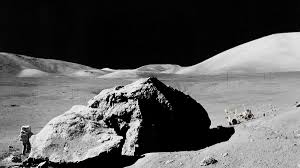This week, NASA made another stride towards establishing a permanent presence on the surface of the Moon when scientists were able to successfully extract oxygen from synthetic lunar soil.
This opens the door for similar extraction on the actual lunar surface as it is the first time it has been finished in a vacuum environment.
Anastasia Ford, a NASA engineer and the director of the CaRD test programme, stated in a statement, “Our team demonstrated the CaRD reactor would endure the lunar surface and successfully extract oxygen.” This is a significant advancement in the design of viable human bases on other worlds.
This procedure involves melting a lunar soil replica with a powerful laser, which releases oxygen. Specifically, scientists employed a Mass Spectrometer Observing Lunar Operations (MSolo) and carbothermal reduction, a method that has been used for a long time on Earth to make steel and solar panels by generating carbon monoxide or dioxide at high temperatures.
Earlier in April, Nasa named four astronauts that will fly to the moon on the Artemis II mission — the first crewed lunar flight of the program.
Nasa has already concluded the Orion spacecraft flight — an uncrewed test —which flew the Moon and returned to Earth in November 2022.
The Carbothermal Reduction Demonstration (CaRD) team used what they referred to as a “Dirty Thermal Vacuum Chamber,” which was located at Houston’s Johnson Space Centre. The 15-foot-diameter spherical container enables for the testing of unclean (or “dirty”) samples.









